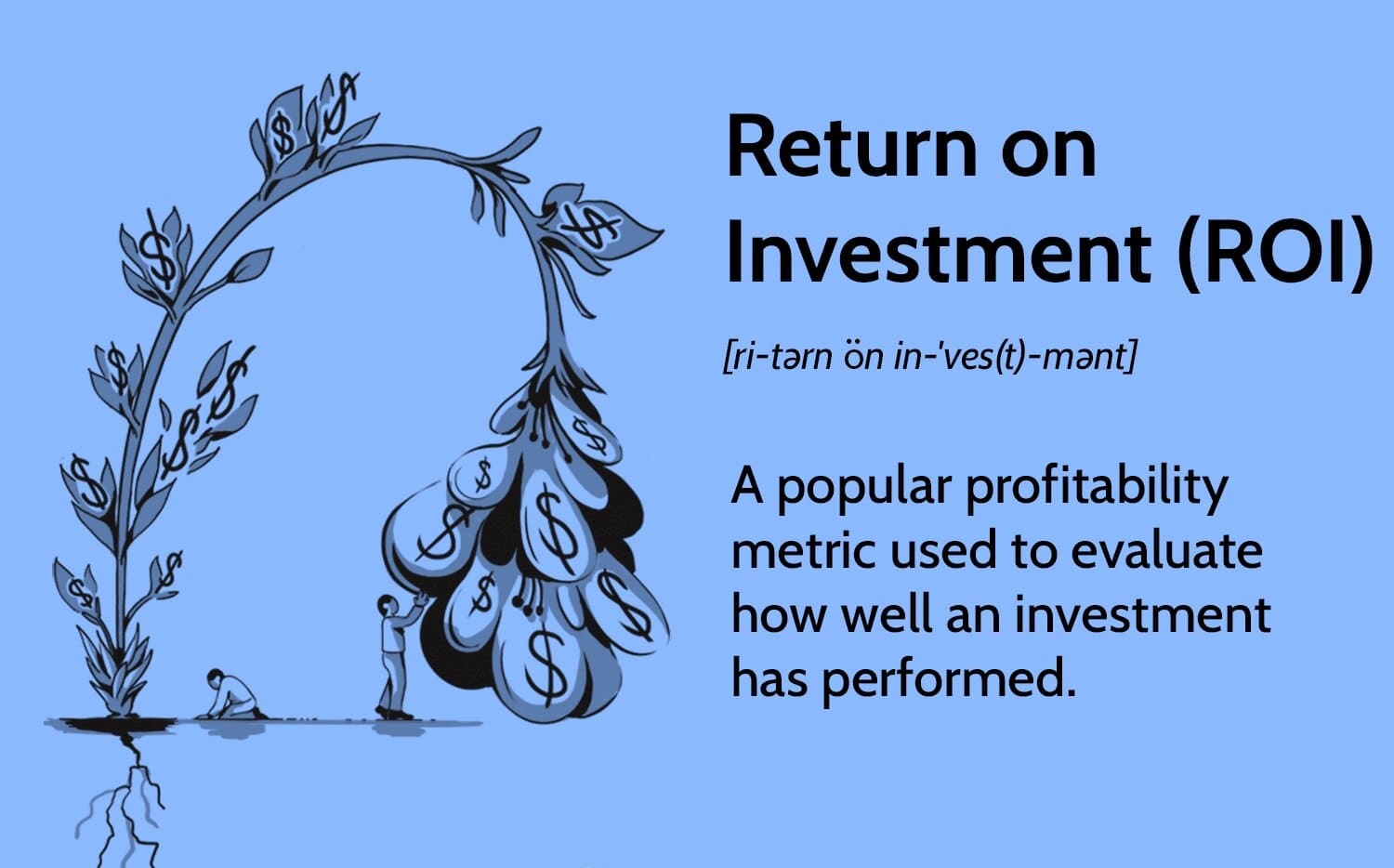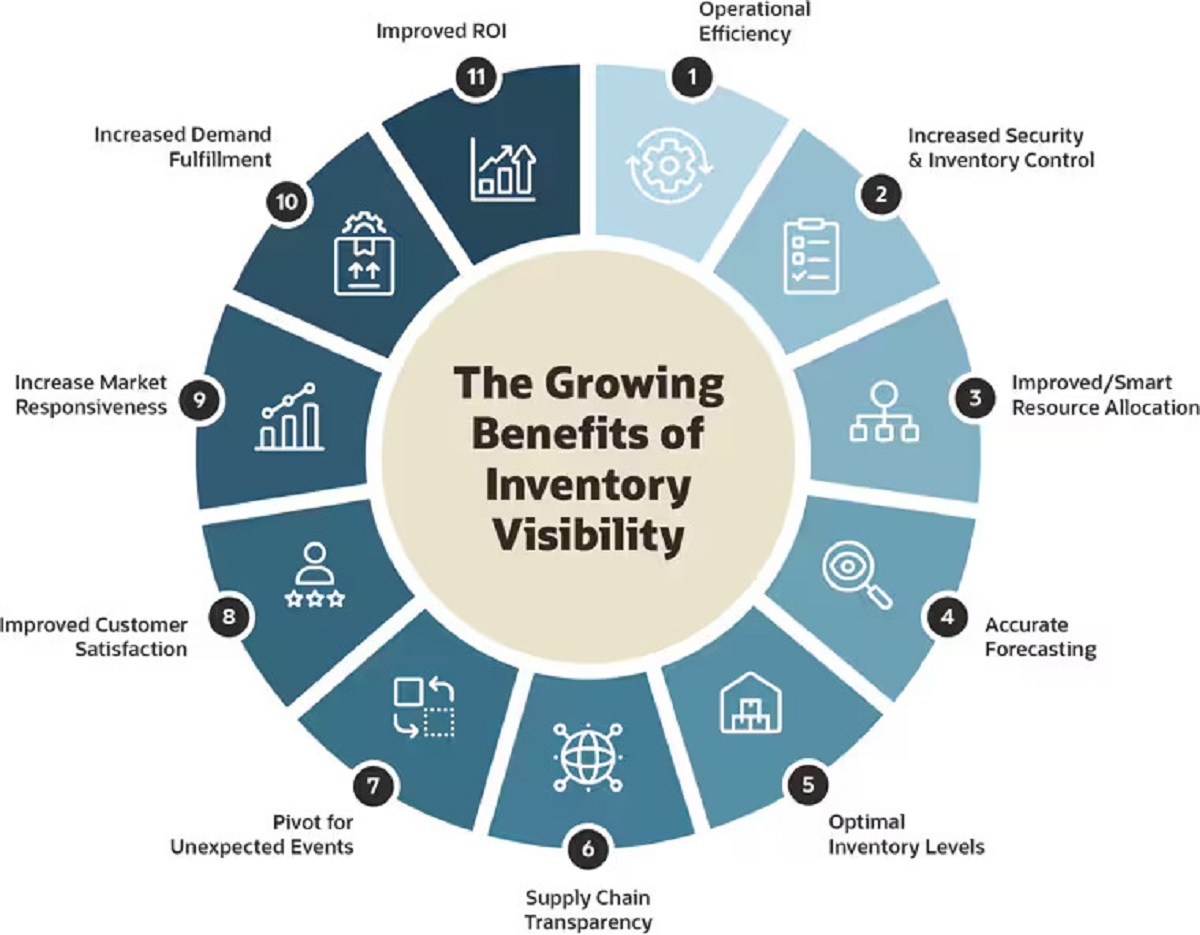Real Estate Investment
Real estate investment is a popular and potentially lucrative option for individuals looking to grow their wealth. It involves purchasing properties, such as residential homes, commercial spaces, or land, with the intention of generating income through rental payments or appreciation in value over time.
One of the main advantages of investing in real estate is the potential for long-term returns. Unlike other investments that can be volatile, real estate generally exhibits stable and steady growth over time. Properties tend to appreciate in value, especially in desirable locations or areas with robust economic development.
Additionally, real estate investments can provide a consistent source of passive income. Rental properties can generate monthly cash flow through the collection of rent payments. This income can be used to cover mortgage payments, maintenance costs, and even generate a profit.
Investing in real estate also offers some tax benefits. Rental income is typically taxed at a lower rate than earned income, and expenses related to the property, such as interest payments on the mortgage, property taxes, and maintenance costs, can often be deducted from the rental income, reducing the overall tax burden.
Furthermore, real estate investments can act as a hedge against inflation. As the cost of living increases, property values tend to rise, allowing investors to preserve their purchasing power and potentially increase their wealth.
However, it’s essential to keep in mind that real estate investment comes with its own set of risks and challenges. Property prices can fluctuate, and there is no guarantee of consistent or significant returns. Investing in real estate also requires careful research, due diligence, and ongoing management to ensure the property remains profitable.
Overall, real estate investment can be a rewarding endeavor for those willing to commit the time, effort, and financial resources. It offers the potential for long-term appreciation, passive income, tax advantages, and a hedge against inflation. It’s advisable to consult with a financial advisor or real estate professional to assess your financial goals and determine if real estate investment aligns with your investment strategy.
Stock Market
The stock market is a dynamic and potentially profitable avenue for investors. It involves buying and selling shares or ownership stakes in publicly traded companies. Investing in the stock market can offer a range of opportunities, including capital appreciation and dividend income.
One of the primary advantages of investing in the stock market is the potential for significant returns. Over the long term, stocks have historically outperformed other asset classes, such as bonds or cash. By investing in well-established companies with strong growth prospects, investors can participate in their success and see their investments grow over time.
Another benefit of investing in the stock market is the ability to diversify your portfolio. The market offers a wide range of companies across various sectors and industries. By spreading investments across different stocks, investors can potentially reduce their risk and mitigate the impact of any single company’s poor performance.
Stock market investments also provide liquidity, allowing investors to buy and sell shares relatively easily. This flexibility enables individuals to react quickly to changing market conditions or take advantage of investment opportunities as they arise.
Furthermore, the stock market allows investors to participate in the growth of the global economy. By investing in multinational companies, investors can benefit from economic growth in different regions and tap into new markets.
While investing in the stock market offers numerous benefits, it’s important to note that it comes with risks. Stock prices can be volatile, influenced by factors such as economic conditions, industry trends, or company-specific events. Investors should carefully assess their risk tolerance and conduct thorough research before investing in individual stocks.
It is also crucial to have a long-term perspective when investing in the stock market. Short-term fluctuations are common, but over time, markets tend to reward patient and disciplined investors who stay committed to their investment strategy.
In summary, the stock market offers the potential for significant returns, diversification, liquidity, and participation in the global economy. However, investors should approach it with caution and conduct proper research to make informed investment decisions.
Mutual Funds
Mutual funds are a popular investment option for individuals seeking diversification and professional management of their investments. A mutual fund pools money from multiple investors and invests it in a diversified portfolio of stocks, bonds, or other securities.
One of the main advantages of investing in mutual funds is the access to professional management. Experienced fund managers oversee the fund’s investments, conducting research, and making strategic decisions on behalf of the investors. This relieves individual investors from the need to constantly monitor and adjust their portfolios, making mutual funds a suitable option for those with limited time or investment knowledge.
Mutual funds also offer diversification. By investing in a single mutual fund, investors gain exposure to a wide range of securities across different sectors or asset classes. This diversification helps spread the risk and can potentially reduce the impact of poor performance in any single investment.
Liquidity is another benefit of investing in mutual funds. Most funds allow investors to buy or sell shares on any business day at the fund’s net asset value (NAV). This provides investors with the flexibility to convert their investments into cash when needed, without the limitations of lock-in periods or penalties.
Furthermore, mutual funds are suitable for investors with various risk tolerances. There are different types of mutual funds available, ranging from conservative funds investing in low-risk securities to aggressive funds focusing on high-growth opportunities. Investors can choose funds aligned with their risk tolerance and investment goals.
Mutual funds also offer a cost-effective way to access a diversified portfolio. The expenses associated with owning mutual funds, such as management fees, are typically lower compared to buying individual stocks or bonds. This makes mutual funds an attractive option for small investors or those looking for a convenient and affordable investment vehicle.
However, it’s important to carefully review a mutual fund’s prospectus and understand its investment strategy, fees, and historical performance before investing. While diversification and professional management can mitigate risk, mutual funds are still subject to market fluctuations and may experience losses.
In summary, mutual funds provide access to professional management, diversification, liquidity, and a range of investment options suitable for different risk profiles. They offer a convenient and cost-effective way for investors to participate in the financial markets and achieve their financial goals.
Bonds
Bonds are a type of fixed-income investment that represent loans made by investors to entities such as governments, municipalities, or corporations. Investing in bonds allows individuals to earn interest income and potentially receive the return of their principal investment at maturity.
One of the key advantages of investing in bonds is the relative stability and predictable income they offer. Bonds typically provide fixed interest payments, known as coupon payments, at regular intervals throughout the bond’s tenure. This makes them an attractive option for conservative investors seeking a steady stream of income.
Bonds also offer investors the opportunity to preserve capital. When investors purchase bonds, they are essentially lending money to the issuer. At maturity, the issuer repays the principal amount, providing investors with the return of their initial investment. This feature makes bonds a relatively lower-risk investment compared to stocks or other higher-volatility asset classes.
Additionally, bonds can offer diversification benefits within an investment portfolio. They often have a low correlation with stocks, meaning that bond prices can move independently of equity markets. This characteristic makes bonds a valuable tool for balancing risk and potentially reducing the overall volatility of a portfolio.
Furthermore, bonds can serve as a hedge against inflation. Although inflation erodes the purchasing power of money over time, the fixed interest payments received from bonds help to maintain the value of the investment against the effects of rising prices.
Investors have a variety of bond options to choose from, including government bonds, corporate bonds, municipal bonds, and international bonds. Each type of bond has its own risk and return profile, allowing investors to tailor their bond investments to their specific needs and risk appetite.
It’s worth noting that bond prices can fluctuate in response to changes in interest rates and credit risk. Bond prices generally move inversely to interest rates, meaning that when rates rise, bond prices may fall, and vice versa. Investors should consider their investment horizon, interest rate expectations, and credit quality of the issuer when investing in bonds.
In summary, bonds can provide a stable and predictable income stream, the return of principal at maturity, diversification benefits, and protection against inflation. They offer a range of options to suit different risk profiles and investment objectives. Before investing in bonds, it’s important to understand the risks involved and carefully assess the terms and creditworthiness of the issuer.
Cryptocurrency
Cryptocurrency has emerged as a popular investment option in recent years, offering investors the potential for high returns and technological innovation. Cryptocurrencies are digital or virtual currencies that use cryptography for security and operate independently of central banks or governments.
One of the main advantages of investing in cryptocurrency is the potential for significant returns. Many early investors in cryptocurrencies such as Bitcoin have seen substantial growth in the value of their investments. The digital nature of cryptocurrency allows for global accessibility and 24/7 trading, creating opportunities for investors to participate in a highly liquid market.
Furthermore, the technology behind cryptocurrencies, blockchain, is revolutionary. Blockchain is a decentralized ledger that records all transactions across a network of computers, ensuring transparency, security, and immutability. The potential applications of blockchain extend beyond cryptocurrencies and can disrupt industries such as finance, supply chain management, and healthcare.
Cryptocurrencies also offer a level of privacy and security not found in traditional financial systems. Transactions are pseudonymous, meaning that users can transact without revealing their identities. Additionally, the use of cryptographic technology enhances the security of cryptocurrency transactions, protecting against fraud and hacking.
However, it’s important to note that investing in cryptocurrencies comes with inherent risks. Cryptocurrency markets can be highly volatile, with prices experiencing significant fluctuations in short periods. Investors should be prepared for the possibility of substantial losses and exercise caution when entering the market.
Regulatory uncertainty is another challenge associated with cryptocurrencies. As governments around the world grapple with the emergence of this new asset class, regulations and laws regarding cryptocurrencies are still evolving. Changes in regulations or bans on cryptocurrencies can have a significant impact on their value and accessibility.
Additionally, the complexity of blockchain technology and the prevalence of scams and fraudulent activities in the crypto space require investors to conduct thorough research and exercise due diligence before investing. Understanding the fundamentals of different cryptocurrencies, their use cases, and the teams behind them is crucial to making informed investment decisions.
In summary, cryptocurrency offers the potential for high returns, technological innovation, privacy, and security. However, it comes with risks such as market volatility, regulatory uncertainty, and the need for careful research. Investors should approach cryptocurrency investment with caution and consider their risk tolerance and investment goals.
Index Funds
Index funds are a popular investment option that aims to replicate the performance of a specific market index, such as the S&P 500. These funds hold a diversified portfolio of stocks or other assets that make up the chosen index, offering investors broad market exposure in a cost-effective and efficient manner.
One of the primary advantages of investing in index funds is their simplicity and passive management. Unlike actively managed funds, index funds aim to mirror the performance of an index rather than outperform it. This passive approach eliminates the need for extensive research and constant portfolio adjustments, making index funds an appealing option for investors seeking a hands-off investment strategy.
Index funds also provide broad market diversification. By holding a representative sample of the securities that make up an index, investors effectively spread their risk across multiple companies and sectors. This diversification helps mitigate the impact of poor performance in any single stock or industry.
Cost-effectiveness is another notable benefit of investing in index funds. Due to their passive management style, index funds generally have lower expense ratios compared to actively managed funds. This means investors can keep more of their investment returns, as a significant portion is not consumed by management fees and other expenses.
Moreover, index funds offer transparency in terms of their holdings. Since these funds aim to replicate the performance of a specific index, investors can easily determine which stocks or assets are included in the fund. This transparency empowers investors to align their investments with their personal preferences or investment goals.
It’s important to note that while index funds offer several advantages, they are still subject to market fluctuations and risks. If the index experiences a downturn, the value of the index fund will also decline. Additionally, index funds may not outperform the market index due to fees and tracking errors.
Investors should also consider factors such as the composition of the index, the fund’s tracking accuracy, and the fund’s underlying costs before investing in an index fund. Evaluating these factors can help investors make informed decisions and select the index fund that aligns with their investment objectives.
In summary, index funds provide a simple, cost-effective, and diversified investment option for investors seeking broad market exposure. They offer transparency, low expense ratios, and a passive management approach. However, investors should carefully assess the specific index, the fund’s tracking accuracy, and associated costs when considering an investment in an index fund.
Peer-to-Peer Lending
Peer-to-peer lending, also known as P2P lending, is a form of lending that connects borrowers directly with individual lenders through online platforms. This alternative form of lending bypasses traditional financial institutions, allowing individuals to lend money to others in a mutually beneficial arrangement.
One of the key advantages of peer-to-peer lending is the potential for higher returns compared to traditional savings accounts or other fixed-income investments. As lenders, individuals can earn interest income on the loans they provide, often at a rate higher than what traditional banks offer. This can be particularly appealing to those seeking alternative investment options to diversify their portfolios.
P2P lending also offers borrowers an alternative source of financing. Individuals who may have difficulty obtaining loans through traditional channels, such as banks, can benefit from P2P lending platforms. These platforms typically employ less stringent credit requirements and offer borrowers access to capital that may not be available through traditional lending channels.
Another advantage of peer-to-peer lending is the simplicity and convenience of the process. P2P lending platforms provide a streamlined online interface that allows borrowers to submit loan applications and lenders to review and select potential borrowers. This digital platform eliminates the need for extensive paperwork or time-consuming processes typically associated with traditional loan applications.
P2P lending also promotes financial inclusion by providing access to capital to individuals who are underserved by the traditional banking system. People with limited credit histories or who may not meet strict lending criteria can still have access to funding through P2P lending platforms, fostering financial inclusivity and empowering individuals to pursue their goals.
However, it’s important to recognize that peer-to-peer lending also comes with risks. As lenders, individuals face the possibility of borrower defaults, which can result in the loss of invested capital. While P2P lending platforms typically use credit scoring and risk assessment tools to mitigate the risk of default, there is still inherent risk involved in lending money to individuals or small businesses.
Investors should carefully evaluate the creditworthiness and risk profile of potential borrowers before participating in peer-to-peer lending. Diversification is also essential, as spreading investments across multiple loans can help manage the risk associated with individual defaults.
In summary, peer-to-peer lending provides an alternative investment option for lenders and an alternative source of financing for borrowers. It offers the potential for higher returns, financial inclusion, simplicity, and convenience. However, investors should be mindful of the associated risks and conduct thorough due diligence before participating in P2P lending.
Retirement Accounts
Retirement accounts, such as individual retirement accounts (IRAs) and 401(k)s, play a crucial role in helping individuals save and invest for their retirement years. These specialized accounts offer various tax advantages and investment options designed to help individuals grow their retirement savings over time.
One of the primary advantages of retirement accounts is the tax benefits they provide. Contributions made to traditional IRAs or 401(k)s are often tax-deductible, meaning that individuals can reduce their taxable income in the year of contribution, potentially lowering their overall tax bill. This tax-deferred growth allows investments within the account to grow tax-free until withdrawals are made during retirement when individuals may be in a lower tax bracket.
Additionally, retirement accounts offer individuals the opportunity for tax-free growth. Contributions made to Roth IRAs or Roth 401(k)s are not tax-deductible, but qualified withdrawals made during retirement are tax-free. This allows individuals to potentially accumulate significant tax-free growth on their investments.
Retirement accounts also provide individuals with a wide range of investment options. Depending on the specific account and provider, individuals may have access to mutual funds, stocks, bonds, index funds, and other investment vehicles. This flexibility enables individuals to customize their portfolios based on their risk tolerance and investment goals.
Furthermore, retirement accounts often come with employer matching contributions for 401(k) plans. Employers may offer to match a portion of the employee’s contributions, effectively providing free money and boosting the individual’s retirement savings.
Another advantage of retirement accounts is the discipline they create. By designating funds specifically for retirement, individuals are less likely to dip into their savings for other purposes. This disciplined approach to saving ensures that retirement funds remain intact and continue to grow over the long term.
One important consideration is that retirement accounts generally come with contribution limits and restrictions on early withdrawals. Individuals should be mindful of these limitations and plan their contributions and distributions accordingly to maximize the benefits and avoid potential penalties.
In summary, retirement accounts offer individuals tax advantages, investment options, employer matching contributions, and disciplined saving for retirement. They provide a powerful tool for individuals to grow their retirement savings over time while taking advantage of tax benefits. It’s important for individuals to understand the specific rules and limitations of their retirement accounts and develop a comprehensive retirement savings strategy.
Gold and Precious Metals
Gold and precious metals have long been considered a store of value and a hedge against economic uncertainty. Investing in gold and other precious metals can provide diversification within an investment portfolio and protection against inflation.
One of the primary advantages of investing in gold and precious metals is their historical significance as a safe haven asset. During uncertain economic times or market volatility, investors often flock to gold as a means of preserving wealth. Gold has proven to hold its value over the long term and has acted as a hedge against inflation and currency fluctuations.
Investing in gold and precious metals can provide diversification benefits within an investment portfolio. Precious metals generally have a low correlation with other asset classes, such as stocks and bonds. This means that when the value of other investments may be declining, the price of gold or other precious metals may be increasing, helping to offset potential losses.
Furthermore, gold and precious metals are tangible assets that can be held physically or through various investment vehicles such as exchange-traded funds (ETFs) or mutual funds. This provides investors with flexibility in terms of how they prefer to invest in these assets.
Gold and precious metals also offer a degree of protection against inflation. During periods of inflation, the value of currency may decline, but the value of gold and precious metals has historically increased. Owning these assets can help preserve purchasing power and act as a hedge against the rising cost of living.
However, it’s important to consider the risks associated with investing in gold and precious metals. Like any investment, their prices can be volatile and subject to market fluctuations. Additionally, storage and security costs should be taken into account if physical ownership of the assets is preferred.
Investors looking to invest in gold or precious metals should carefully consider their investment goals, risk tolerance, and time horizon. Due diligence is crucial, and it’s advisable to consult with a financial advisor or do thorough research before making any investment decisions.
In summary, gold and precious metals have historically served as a safe haven asset, providing diversification, protection against inflation, and tangible ownership. However, investors should be aware of the risks and conduct proper research to make informed investment decisions.
Art and Collectibles
Investing in art and collectibles has gained popularity in recent years as individuals seek alternative investment options. Art and collectibles offer investors the opportunity to own unique and valuable assets that can appreciate in value and provide aesthetic enjoyment.
One of the primary advantages of investing in art and collectibles is the potential for capital appreciation. Throughout history, artwork and rare collectible items have demonstrated the ability to increase in value over time. As the demand for unique and high-quality pieces grows, investors can potentially realize significant returns on their investments.
Art and collectibles also offer the benefit of tangible ownership. Owning a physical asset, be it a painting, sculpture, classic car, or rare coin, provides a sense of enjoyment and satisfaction beyond financial gains. Collectors can appreciate the beauty, history, and craftsmanship of their investments while potentially seeing their value grow.
Furthermore, investing in art and collectibles can provide diversification within an investment portfolio. These assets often have a low correlation with traditional financial markets, such as stocks and bonds. This means that when the value of other investments may be declining, art and collectibles may hold or even increase in value, providing a favorable risk-return profile.
However, it’s important to note that investing in art and collectibles comes with certain complexities and risks. The value of these assets can be subjective and influenced by factors such as popularity, market trends, and the reputation of artists or brands. Additionally, determining the authenticity and provenance of art and collectibles is crucial to ensure their value and protect against fraud.
Investors interested in art and collectibles should approach the market with caution and conduct thorough research. Understanding the specific niche or category of artworks or collectibles, staying informed about market trends, and seeking the guidance of experts in the field are essential steps to making informed investment decisions.
Moreover, investing in art and collectibles should be viewed as a long-term commitment. It may take time for the value of these assets to appreciate, and there may be costs involved in storage, insurance, and maintenance. Patience and a deep personal interest in the chosen art or collectible niche can enhance the overall experience of investing in these assets.
In summary, art and collectibles offer the potential for capital appreciation, tangible ownership, and diversification within an investment portfolio. While they can be rewarding investments, it’s important for investors to perform thorough research, seek expert advice, and approach the market with a long-term perspective.

























